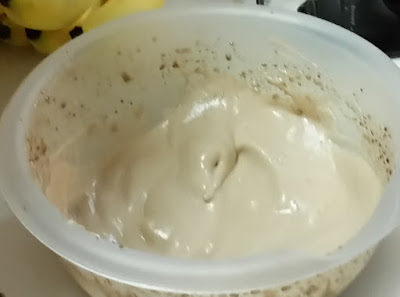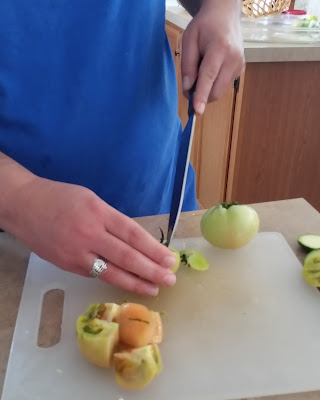The title of this week's post was going to be "meringue: your needy friend who's fun to be with", but because of some tinkering on my part and no plan B, we are now delving once again into the world of when cooking goes wrong...but I'm getting ahead of myself.
Meringue in its purest form is whipped egg whites, but this doesn't cover the sheer magnitude of uses being able to make a good meringue can have in your kitchen. The foamy texture of a well done meringue is unique. It can can used as a pie topping, a fold-in ingredient for cakes to give them extra lift, the base for an angel food cake, or for cookies. I'm sure there are a lot of other uses, but i don't want to make this into one big list, because what fun would that be? It can be prepared with many different flavors, as long as it is done correctly. Like, if you substitute one sweetener for another and you don't listen to your mom saying it probably won't work...wait...getting ahead of myself again.
The downside to making meringue is that it is super picky. There are a dozen different ways a meringue can go wrong, but I will outline the method I use to make my meringues with a pretty high success rate. I will also show you the method I used today, which so far has a success rate of 0 but can be salvaged into something pretty tasty that looks like a cookie.
Some cooks, and pretty much every commercial bakery that I know of, stacks the cards in their favor by using cream of tartar, a stabilizing agent that makes the meringue less likely to dissolve into a puddly goo of honey and sadness...and leave you in a panic, because you write a cooking blog and the people want their weekly dose of magic...but more on that in a few.
Anyway, if the world was perfect I would use cream of tartar because in a perfect world it wouldn't leave an aftertaste that ruins the entire dessert for me. As it is, I will explain my method for making meringue cookies that is cream of tartar free.
Meringue cookies
 |
| A less fluffy, but still representation of the wonder that is meringue cookies. |
Ingredients:
2 egg whites
1/2 cup sugar
2 egg whites
1/2 cup sugar
Seriously, that's it.
Directions:
You see how I listed egg whites up there? Well, you need the whites of an actual egg, not the egg substitutes that are available in the grocery store. Not too complicated, right? I mean surely you, as a beginning cook, knows how to do that. Nah, I'm just kidding. Here is my very first instructional cooking video on how to separate eggs.
You see how I listed egg whites up there? Well, you need the whites of an actual egg, not the egg substitutes that are available in the grocery store. Not too complicated, right? I mean surely you, as a beginning cook, knows how to do that. Nah, I'm just kidding. Here is my very first instructional cooking video on how to separate eggs.
I put the whites in a plastic bowl. That was not mere chance, but rather pure liquid genius on my part. You see, in order to make meringue, the conditions have to be just right. The stars must align, the heavens open up, and tiny cherubim lift your egg whites to the heavens. In laymen's terms, for those of you who are not fluent in delusional, you need to make sure your yolks get to room temperature and stay there for the process. A plastic bowl does not retain the heat or cold as much as glass, metal, or ceramic bowls do, so that's why I always use them for meringue. Humidity and high altitude can also kill a meringue, so maybe save your meringue making session for after your sauna session in the mountains. I live in a flat, dry area, so generally neither of those elements factors in.
After you let the egg whites sit out for a while, preheat the oven to 300 degrees. Take the egg whites and beat them on high until they form stiff peaks. In case you can't see it well in the final picture below, stiff peaks is when you lift the meringue up with beaters or a spoon and the meringue forms a peak that points straight up. If the peak bends, then that's a soft peak and you're almost there, just keep on beating. It is really cool to watch those slimy egg whites turn into a fluffy, cloud-like mass.
Now if i had been making my usual recipe, I would have taken my sugar and gradually added about a teaspoon at a time to the meringue and beaten well after each addition.
This did not happen.
Instead, I wanted to try honey because it's a raw sugar and I wanted to try adding some chocolate flavored honey sticks as well as regular honey. I figured if I just kept whipping the meringue, it would be alright. It was not. Look at these photos if you dare:
 |
| No, don't do it!!!! |
 |
| Oh the humanity!!! |
Faced with a gloopy mess and a deadline (self imposed, but man I'm a jerk about it), I decided to finish out the steps. Full disclosure, I don't own a piping bag, and technically a piping bag is what is called for in this recipe. I know, I'm a horrible, piping bagless person. I don't know how you'll ever forgive me.
I use a ziploc bag method instead that works well for simple stuff. First you put the meringue (or "meringue", in this case) in a gallon ziploc bag, squeeze the air out, seal it, and squeeze all the goodness into a corner. Cut the tip out of that corner (don't squeeze the bag when you do this, or at least record it if you do and send it to me) and voila! A down and dirty piping bag.
On a greased cookie sheet, I then make squiggles. You can make whatever design you want really--hearts, geometric shapes, octopi...ok, I really just like that word but you could, nonetheless. Once you have covered the cookie sheet with your own creativeness, stick it in the oven and bake 30-45 minutes or until the cookies are dry.
Mine actually don't look bad, as can be seen in the picture at the beginning of the recipe, but it is supposed to make about double what is pictured. I do hope you try these tasty, cheap, fun cookies and learn from my mistakes. Let me know what you think if you do.
 |
| Not as many cookies as one may hope... |
Mine actually don't look bad, as can be seen in the picture at the beginning of the recipe, but it is supposed to make about double what is pictured. I do hope you try these tasty, cheap, fun cookies and learn from my mistakes. Let me know what you think if you do.






























